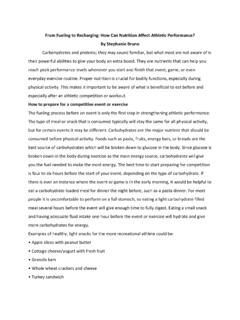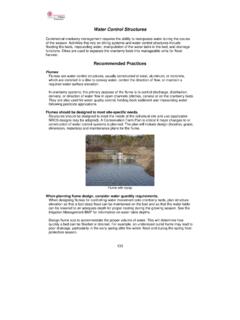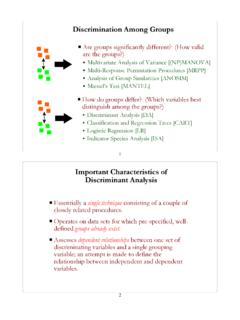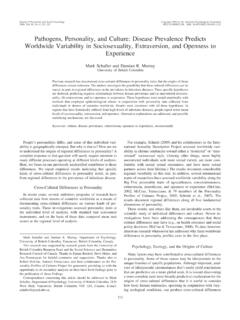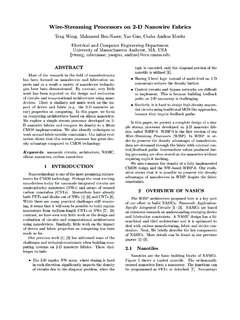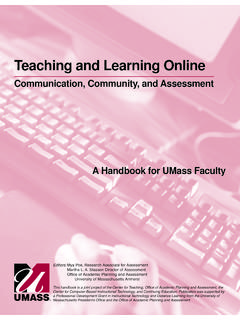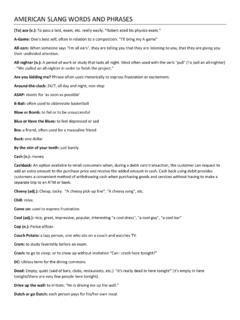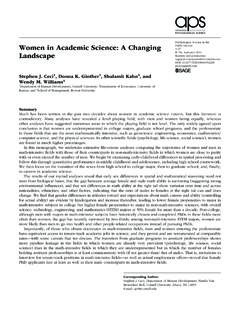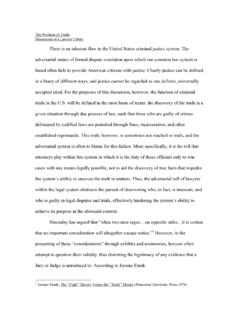Transcription of Preventing and Responding to a Fuel or Oil ... - UMass …
1 Preventing and Responding to a Fuel or Oil Spill The best way to reduce the possibility of a fuel or oil spill is to take preventative steps to minimize the chance that a spill will occur. Preventative steps include: (1) use of food grade oil;. (2) proper storage and handling of fuel and oils and; (3) regular maintenance and inspection of equipment. In spite of taking these steps to minimize spills, accidents do occur. Even though most spills tend to happen during harvest, you should be prepared to handle a fuel or oil spill at any time during the year. Should an accidental spill occur, be prepared to respond quickly. Clean-up preparedness requires: (1) prior training in clean-up procedures; (2).
2 Immediate availability of clean-up (spill kit) materials and; (3) prompt notification to the handler. Following the recommended practices will insure food safety and reduced environmental risk. Despite the fact that the FDA tolerance, the legal allowable amount of food grade lubricant residue that can occur on cranberries, is 10 ppm, the goal of every grower should be to deliver fruit with no food-grade oil residue. Remember that there is no tolerance for non-food grade oil or fuel on cranberries. Recommended Practices Equipment Maintenance and Preventative Measures Employ preventative measures and maintain equipment. Always use food-grade lubricants (except crankcase oil) approved by the U. S. Food and Drug Administration and designated as H-1 in all equipment.
3 Food grade oil has an FDA tolerance of 10 ppm. Non-food grade oil has zero tolerance. Machinery subjected to high use should have annual replacement of hoses, fittings, seals, and hydraulic lines. Machinery subjected to low annual use should have components changed every 3 years. Pay particular attention to proper installation of seals, fittings, etc. Consult an equipment/parts supplier to determine the appropriate maintenance schedule for your equipment use. Routinely inspect all fuel, oil, or fluid-containing fittings, hoses and seals during machinery operation to detect leaks. Inspect harvesting equipment as well as other machinery such as dike mowers and hydraulically or PTO-activated machinery operated on or near open water.
4 Inspect all fruit delivery trucks for fuel, oil, and fluid leaks before they enter the bog or harvest area. Chock or block the wheels of harvest elevators, harvest pump trucks, and other equipment operated near the bog to prevent them from rolling into water. Consider using a portable containment pad or constructing a temporary earthen dike around portable equipment that hold large volumes of diesel fuel, gasoline, or oil near open water. If an engine or pump tips over or leaks, the fuel or oil is retained inside the containment area and clean up is easier. Place reusable containment booms in the water between harvesting equipment and the corralled fruit. Each boom should extend from the entrance of the elevator conveyor to the 169.
5 Dike. In the event of a fluid leak, the contaminated water will be isolated from the corralled fruit. Install ballcock-type shutoffs on hoses connecting the hydraulic fluid tank and pump. In the event of a hose rupture, deployment of the shutoffs will stop flow of fluid to the pump, significantly reducing the amount of fluid leakage. Use of double-walled hydraulic fluid tanks will lessen the likelihood of leaks due to tank rupture. Locate fuel and oil containing equipment such as auxiliary pumps and conveyor engines as far from open water as possible. Do not operate auxiliary pumps or engines on the edge of dikes. Keep them a safe distance away from open water to avoid an oil or fuel spill or leak into the water.
6 Small engines and pumps should be retro-fitted with a catch pan or basin to collect fuel or oil in the event of a leak or spill. The basin should be sized to contain at least 110% of the fluid storage capacity. Consider converting gasoline powered engines on bog buggies, reeling machines and other equipment to propane fuel. Spill Clean up Materials and Supplies A supply of fuel/oil clean-up materials should be readily available at all times. A well-stocked kit contains: 1) BOOMS to contain or corral the spill; 2) ABSORBENT. MATERIALS to clean up the fuel or oil; 3) a CONTAINER to store soiled materials prior to disposal; 4) ADDITIONAL SUPPLIES to aid in the clean-up process and; 5) an ACTION. PLAN.
7 Please refer to list of suppliers. Booms. The booms you purchase should be long enough to completely surround a leaking piece of equipment and contain the fuel or oil leak. Dispose of contaminated absorbent booms after use and purchase a new clean absorbent boom for your spill kit. Reusable containment booms must be thoroughly washed with soap and hot water before reuse. Harvest booms can be used to contain a spill until proper spill supplies can be obtained. If the spill is food grade oil, the harvest booms should be removed away from the bog and cleaned with soap and water. If the spill is non-food grade oil, discard the booms. Absorbent materials. Have a sufficient quantity of absorbent materials on hand to absorb the entire fuel or oil volume contained in the fuel tank or oil lines.
8 The absorbent material must come in direct contact with the oil or fuel, so placement of the absorbent material is critical. Hydrophobic absorbent materials are best for fuel or oil spills because they absorb only fuel or oil, not water. A well-stocked spill kit should have several forms of absorbent material: pillows, pads, loose pulp, and granular material. Loose granular or particulate absorbents work faster than pillows or pads. Select absorbents that float indefinitely. Purchase materials that will absorb food- grade oil. Promptly remove soiled clean-up materials regardless of buoyancy characteristics. Containers. Spill kit containers can be rigid plastic barrels or buckets or soft duffel bags.
9 The container serves both for storage of clean materials and for disposal of soiled materials. If you use the duffel bag, include a supply of plastic bags for disposal of soiled materials. Regardless 170. of the type of container you choose, make sure the spill kit container is properly marked. Complete kits can be purchased from local cranberry equipment suppliers or you can assemble your own kit. Refer to CCCGA Suppliers list. Additional supplies. If you use loose pulp or granular absorbent materials, a skimmer to remove the soiled materials from the water should be a component of your spill kit. Disposable rubber gloves will prevent additional contamination. Wear safety eye glasses during containment and spill clean-up.
10 Consider also: a supply of wood dowels with varying sized tapers (to be used as plugs in ruptured hoses), a small mallet, duct tape to wrap hoses, and a 150 ft. coil of rope for securing and moving booms. Action Plan. Develop a written action plan of what you will do in the event of a spill. Review your plan with your family and employees and add copies of the plan to each of your spill kits. Train all employees in proper emergency response to contain and clean up an oil or fuel spill. Spill Clean-up Preparedness For large land- or water-based spills, especially fuel spills, you may want to contract with a private company that specializes in quick response environmental remediation. Keep their telephone number handy in the event that a spill occurs.

